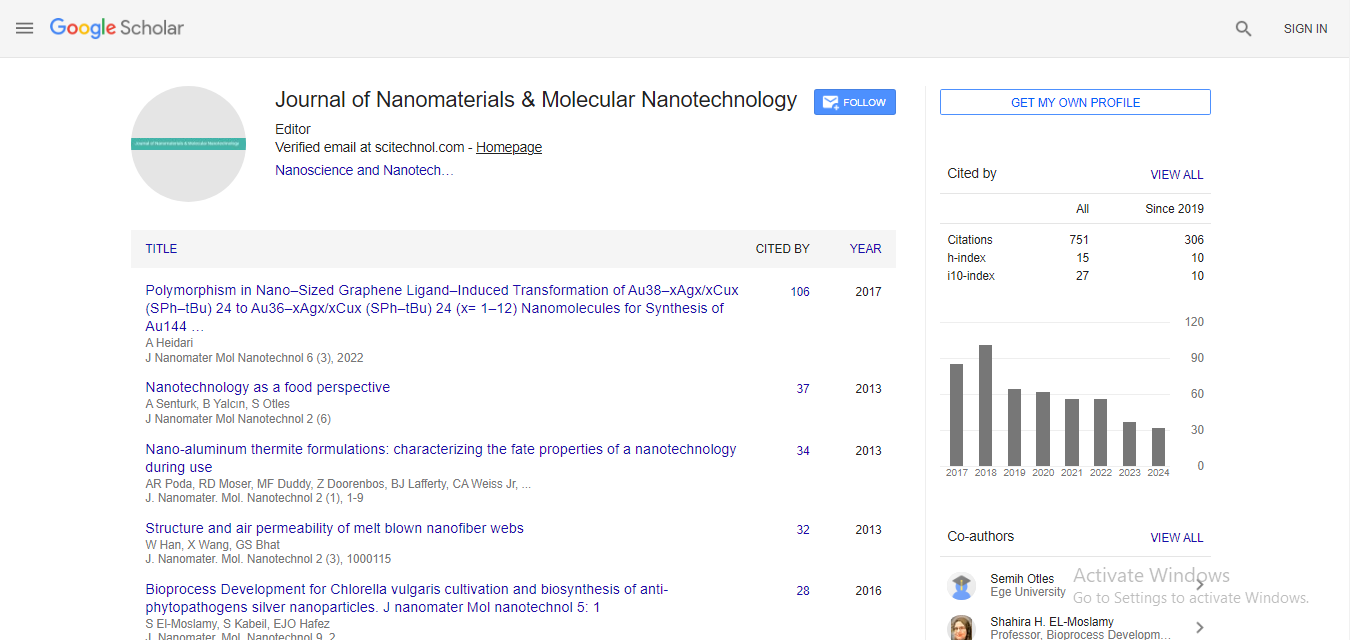G-BBB-Graphene oxide sheets as Bio-Building Blocks
Alessandra Aloisia and Rosaria Rinaldib
CNR Institute for Microelectronics and Microsystems, Lecce, Italy;
University of Salento, Faculty of Sciences, Department of Mathematics and Physics “E De Giorgi”, and Scuola Superiore ISUFI, Lecce, Italy
: J Nanomater Mol Nanotechnol
Abstract
Graphene- and graphene oxide (GO)-based structures have strong potential for a number of applications, including tissue engineering, drug/gene delivery, sensor and reactor devices. The ability to incorporate graphene into carrier systems with regular three-dimensional (3D) geometry and the ability to stack up GO sheets with proteins may open new perspectives for biomedical application. Investigating graphene oxide and macromolecule interaction is central for different biological requests: i) where the GO sheets come in direct contact with protein molecules in the bio-fuids; ii) for the design and fabrication of bioinspired nanocomposites with tailor-made chemical and mechanical properties. Here we show that the interaction between fibronectin (FN) - a core component of many extracellular matrices (ECM) - and GO can be modulated by altering the pH of the reaction mix. We employed atomic force microscopy to probe the conformational changes of self-assembled FN on GO. This pH-dependent adsorption is ascribed to the electrostatic interactions between the negatively charged GO surface and the tunable ionization of the FN chains. Interesting results were also obtained integrating a layer of GO derivative into the shell of biodegradable capsules by exploiting an easy layer-by-layer (LbL) protocol. Here we discourse on the morphological properties of these hybrid capsules, the GO derivative layer influence on the porosity and the robustness of the multilayer composite shells as well as the composite capsules intracellular localization and biocompatibility.
 Spanish
Spanish  Chinese
Chinese  Russian
Russian  German
German  French
French  Japanese
Japanese  Portuguese
Portuguese  Hindi
Hindi 



